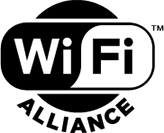Earlier this year, Wi-Fi Alliance® hosted its 2025 Asia Member Meeting in Tokyo, Japan, bringing together industry leaders and innovators to discuss the latest advancements in Wi-Fi®. A standout session from the event was the panel on Interoperability Events — critical gatherings where Wi-Fi Alliance members test the functionality and compatibility of their Wi-Fi products in real-world scenarios. These events are more than just technical exercises; they are a cornerstone of the collaboration that drives the Wi-Fi ecosystem forward.
In this blog, we have distilled the panel’s rich discussion, offering a glimpse into how Interoperability Events take shape, their impact on the industry, and what is on the horizon for 2025.
How Interoperability Events come to life
The panel kicked off with Peng Yan, Wireless Technologist at Wi-Fi Alliance and primary point of contact for Interoperability Events, walking through the anatomy of an Interoperability Event. These events come in two formats: member-driven and staff-driven.
Member-driven events: An example of these would be Interoperability Events focused on Wi-Fi HaLow™ and Wi-Fi Location™. Here, members take the lead, organizing the testing themselves while staff provide logistical support — venues, network cables, and whatever else is needed to make it happen.
Staff-driven events: These start with a clear objective, often sparked by member feedback. For instance, when operators flagged roaming as a persistent pain point, Wi-Fi Alliance responded with a series of dedicated roaming events. Similarly, Internet of Things (IoT) devices that run on batteries require low-power functionality, prompting an event for testing interoperability with different power saving modes. This event helped Wi-Fi Alliance improve its Power Saving Features certification.
Staff identify the event’s theme, utilize testing labs like RDL in Santa Clara or collaborate with Authorized Test Labs (ATLs) worldwide, and brainstorm test scenarios with members. From there, it is all about logistics — simulating environments (such as office or home setups) and running pre-event calls with vendors to align on test scenarios. During the event week, participants execute tests, collect data, and share feedback to refine future events.
The numbers tell the story
Since September 2023, Wi-Fi Alliance has hosted Interoperability Events with more than 100 member companies participating, testing more than 450 end-product devices (not just reference designs). Gaurav Jain, VP of Technology at Wi-Fi Alliance, highlighted a key goal: doubling participation to amplify the industry-wide benefits.
“Interoperability is not just about technology — it is about collaboration,” Gaurav noted, echoing a recurring theme. These events bring together a diverse set of stakeholders — including device manufacturers, OS vendors, enterprise solution providers, and operators — to evaluate products and device implementations in deployment-relevant environments. They provide a collaborative platform to uncover compatibility issues, bridge gaps across the ecosystem, and ensure that Wi-Fi continues to deliver on its promise of seamless, reliable connectivity.
Real-world impact: Voices from the panel
The panelists shared how these events have shaped their work:
Mark Hamilton, Networking Standards Director, RUCKUS Networks: “We passed all the tests quite easily, but not to the level of performance that we expected or wanted, and we used the Interoperability Events to solve that problem and take the next step beyond what the test cases require.” Mark emphasized the importance of working through MLO operations and behavior during the Wi-Fi 7 events, going further than what is possible during plugfests.
David Halasz, VP of Standards, Morse Micro: Reflecting on a recent Wi-Fi HaLow event, David emphasized that even though they had to scale back activities to focus on certification testing due to spectrum constraints, “the important thing was that we were in China, and it was definitely the Interoperability Event that gave us an opportunity to perform outreach.”
Dorothy Stanley, HPE Fellow, Aruba: “Without the Interoperability Event, we would not have had client vendors in one place to test efficiently, find the errors, and then go back and incorporate that into our implementation.” Dorothy also traced the evolution of Wi-Fi Location testing, noting how Interoperability Events have driven sub-meter accuracy and improved vendor implementations since 2018.
Guoqi Cui, Senior Test Engineer, Google: Guoqi shared a specific Wi-Fi 7 debugging win, where an event revealed a fast-roaming conflict affecting MLO with enterprise access points. “What we found is that for an enterprise system, normally people enable fast roaming, so we discovered that the issue is really caused by that flag.”
To add to the experiences of the rest of the panel, Peng recounted how testing at a WPA3™ event shaped the compatibility mode solution, now an important part of the WPA3 program: “We had transition mode issues with many devices, so at the WPA3 event, we tested two solutions — compatibility mode (RSN Override) and multiple BSSIDs under one SSID — across over 100 devices. The goal was to ensure legacy devices could connect while newer ones used WPA3. Results led to the adoption of RSN Override, with compatibility mode launching last year to fix transition mode problems.”
Looking ahead: The Interoperability Lab and 2025 plans
Exciting developments are on the horizon. Wi-Fi Alliance is building an Interoperability Lab at RDL in Santa Clara, set to open to members in 2025. With 15+ Wi-Fi 6/Wi-Fi 7 routers, 130+ client devices (laptops, smartphones, smart home, etc.), and multiple ISP backhauls, it is designed for stringent testing of real-world scenarios.
For 2025, confirmed events include:
- Wi-Fi Location: April 28 – May 2 ∙ Santa Clara
- Security: May 5 – May 9 ∙ Santa Clara & Taipei; May 12 – May 16 ∙ Beijing
- Wi-Fi 6 and Wi-Fi 7: September 8 – September 12 ∙ Santa Clara, Taipei, and Beijing
Why Interoperability Events matter
The panel underscored that interoperability testing is not just about passing a checklist — it is about ensuring Wi-Fi works for everyone, everywhere. It also highlighted that there is no one-solution-fits-all approach to interoperability; effective testing must account for diverse needs of devices, networks, and real-world deployment scenarios. From fixing roaming issues to boosting Wi-Fi 7 performance, these events shape standards, inform certifications, and strengthen the foundation of an ever-evolving Wi-Fi ecosystem.
Interoperability Insights, a new Wi-Fi Alliance publication for members, details actionable insights from Interoperability Events, offering significant value to members and the broader industry, even for those who did not participate in an event. With the new lab and multiple events scheduled for 2025, there has never been a better time to get involved.
If you are a Wi-Fi Alliance member eager to join an Interoperability Event, head over to our Interoperability Events page to register. If you would like more information on joining Wi-Fi Alliance so you can participate, send us a message.
The statements and opinions by each Wi-Fi Alliance member and those providing comments are theirs alone, and do not reflect the opinions or views of Wi-Fi Alliance or any other member. Wi-Fi Alliance is not responsible for the accuracy of any of the information provided by any member in posting to or commenting on this blog. Concerns should be directed to info@wi-fi.org.




Add new comment